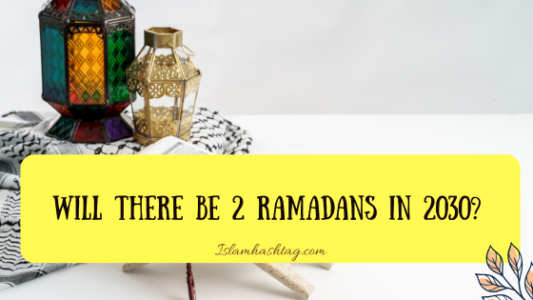Will there be 2 Ramadans in 2030?

The Islamic calendar, based on the lunar cycle, is shorter than the Gregorian solar calendar by about 10 to 12 days each year. This difference occasionally leads to fascinating occurrences, such as the possibility of two Ramadans falling within a single Gregorian year. One such event is predicted to happen in the year 2030, sparking curiosity and questions among Muslims worldwide. But how does this work, and what does it mean for the global Muslim community? Let’s dive into the details.
Understanding the Islamic Lunar Calendar
The Islamic calendar, also known as the Hijri calendar, consists of 12 months based on the cycles of the moon. Each month begins with the sighting of the new moon, making the Islamic year approximately 354 or 355 days long. In contrast, the Gregorian calendar, which is solar-based, has 365 days (or 366 in a leap year). This discrepancy causes Islamic months to shift earlier by about 10 to 12 days each Gregorian year.
The Phenomenon of Two Ramadans in One Year
Because of the shorter Islamic year, Ramadan—the ninth month of the Hijri calendar—gradually moves through the seasons over a 33-year cycle. Occasionally, this shift results in Ramadan occurring twice within a single Gregorian year. This rare event happens when the first Ramadan falls early in January and the second one begins in late December of the same year.
In 2030, this phenomenon is expected to occur:
- First Ramadan: Expected to begin around January 5, 2030.
- Second Ramadan: Expected to begin around December 25, 2030.
This means that Muslims will observe Ramadan twice within the same Gregorian year, a unique occurrence that last happened in 1997 and will happen again in 2063.
How Does This Affect Muslims?
While the idea of two Ramadans in one year may seem extraordinary, it doesn’t change the religious obligations or significance of the holy month. Muslims are still required to fast, pray, and engage in acts of worship during both Ramadans. However, the timing of these months will bring different experiences:
- First Ramadan (January 2030): Falling in winter, this Ramadan will have shorter days and cooler weather in many parts of the world, making fasting relatively easier.
- Second Ramadan (December 2030): Occurring in winter again, this Ramadan will also benefit from shorter fasting hours, depending on the geographical location.
Historical Context and Future Occurrences
The occurrence of two Ramadans in one Gregorian year is not unprecedented. It last happened in 1997 and is expected to occur again in 2030 and 2063. This phenomenon is a natural result of the interplay between the lunar and solar calendars and serves as a reminder of the unique nature of the Islamic calendar.
Why Does This Matter?
For Muslims, the lunar calendar holds deep spiritual significance. The shifting of Ramadan through the seasons allows believers to experience fasting in different conditions, fostering resilience and gratitude. The prospect of two Ramadans in 2030 is a reminder of the dynamic nature of time and the importance of aligning religious practices with the natural world.
Preparing for 2030
As 2030 approaches, Muslims around the world can look forward to this rare occurrence with anticipation. It’s an opportunity to reflect on the beauty of the Islamic calendar and the flexibility it offers in connecting faith with the rhythms of the universe.
Conclusion
Will there be 2 Ramadans in 2030? The prediction of two Ramadans in 2030 is a fascinating example of how the Islamic lunar calendar interacts with the Gregorian solar calendar. While it may seem unusual, it underscores the adaptability and richness of Islamic traditions. As Muslims prepare for this unique year, they can embrace the opportunity to deepen their spiritual connection and celebrate the diversity of their faith.
Follow our Whatsapp channel for Daily spirituality
Discover more from Islam Hashtag
Subscribe to get the latest posts sent to your email.




